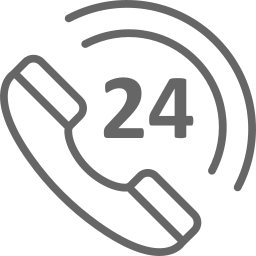Table of Contents
Question 1: The event..
Question 2: The Breach..
Question 3: The Actors.
Question 4: Your Approach..
References.
Many automobile companies have been focusing on self-driving cars by making use of high-end technologies such as autonomous navigation and artificial intelligence-based systems. These cars are able to sense their surroundings based on the sensors attached to them and operate without human intervention. Uber has been one such company investing in autonomous cars and has been testing various approaches in the technology with the help of a dedicated group of engineers who form the Advanced Technologies Group (Shetty 2020). It has been receiving tough competition from major brands in the sector including Tesla, Gm, etc but Uber has been focusing more on short term goals such as cost reduction and testing according to conditions (Shetty 2020). But the company faced a major blow when one of its test vehicles was subjected to a fatal crash involving a pedestrian. The investigation of the accident had suggested lack of adequate safety measures as a contributing factor to the accident. As per the reports, a pedestrian named Elaine Herzberg was trying to cross a street but with lack of safety (Wakabayashi 2019). Toxicology reports had suggested that the pedestrian was found to be under the administration of drugs which might have led to impairment in her judgement. While crossing the street she was believed to be hit by one of the self-driving cars of Uber which had one of the safety drivers Rafael Vasquez present in the vehicle at the time of the incident. Investigations had suggested that the safety driver had been streaming a show on her phone while being behind the wheel. The dash cam present in the car when investigated had shown that the safety driver had been making use of her phone for almost 36% of the total journey. Uber requires its safety drivers to take control over the steering in cases where the autonomous driving car system is not able to make proper decisions (Lee 2019).
Uber has been testing driverless cars in US with the help of high-end algorithms to minimise the contribution of humans to provide instructions to cars for navigation but it also relies on its safety drivers who are needed to be present behind the steering wheel at every moment while the cars are on the road so that in certain cases where the self-navigation systems are unable to process the inputs, the safety driver can take over the system and navigate the vehicle until the computer system can over from a point to self-navigate (Lee 2019). But in this incident, the safety driver known as Rafael Vasquez had been found to be using her phone distracting her from paying attention to the inability of the car to detect Elaine Herzberg on the street leading to the death of the latter. Rafael had been charged with the death of Elaine but has been released on a trial pending February 2021 (Shepardson 2020).
The main actors related to the decision making in this scenario include the safety driver and the pedestrian involved in the incident. The pedestrian who lost her life in the incident, Elaine Herzberg had been involved in the decision making related to crossing the street but under the influence of drugs as suggested by the Toxicology reports which might have led to an impaired vision (Lee 2019). Another important actor involved in the ethics breach is the safety driver of the autonomous car who was responsible for controlling the car in cases of software or hardware malfunction but the investigation had found the safety driver to be involved in a mobile streaming app leading to distraction from her duties. The last actor involved in the incident is the company itself as it had been made aware of the malfunctioning in the system controlling the car. Self-driving cars have always been linked to important ethical questions like should these vehicles be programmed to reduce the number of deaths to the lowest or should the focus on the safety of passengers at all costs (Nyholm and Smids 2016). The two alternative ethical decision-making frameworks which might help in forming better ethical decision making include the consequentialist framework and the duty framework. The consequentialist framework focuses on the decision-making process through considerations on the people who could be directly or indirectly be affected by a particular decision (Palmer 2017). In the case of Elaine Herzberg, a consequentialist framework of decision making could have helped the actor make proper decisions considering herself and the people around her while trying to cross a street being under the influence of drugs. Similarly, the alternative decision-making process for the safety driver could have been facilitated using the duty-based ethics framework. Duty-based frameworks or more commonly known as Deontological frameworks are based on the actions of people rather than the consequences of those actions (Wagner, Borenstein and Arkin 2019). Duty based ethics are similar to rules which need to followed no matter how preferable the consequences might be produced. A duty based ethical framework could have helped avoid the incident as it would have helped the safety driver to consider using her phone as either a right decision or a wrong decision. Other influences which can play an important role in the mitigating the chances of such incidents include local and central governments. Governments can help form policies which can help companies and individuals adhere to basic rules and avoid such happenings.
Such incidents linking driverless cars with pedestrians have limited approaches as there have already been numerous factors which have already been considered to improve the performance of autonomous cars while ensuring maximum safety to the people around it (Elliott, Keen and Miao 2019). One way in which such incidents can be mitigated is through setting up of proper rules and constantly monitoring every factor related to decision making. In the case of Uber, the company had paid more attention on the performance of the vehicle during the testing phase rather than giving equal importance to the duties of the safety driver. If the company had implemented methods to track the performance of the car and also monitor the actions of the safety driver while testing the vehicle, the incident could have been avoided. The vehicle had already been equipped with a dash cam with later showed that the safety driver had been making use of her phone while testing the vehicle in the city. If the video recorded by this dash cam had been analysed in real time, the concerned authorities could have helped avoid such an incident. Also, the safety driver could have been under the impression of being monitored hence, she could have not chosen to use her phone while testing the vehicle. A plan B which could have been implemented in cases of failure of the above discussed plan is the reduction of dependence of autonomous vehicles on human intervention to avoid accidents. While in testing phases, companies can develop algorithms such that in situations where the vehicle is not able to formulate decisions, the vehicle should kill the engine at that very point.
Elliott, D., Keen, W. and Miao, L. 2019. Recent advances in connected and automated vehicles. Journal of Traffic and Transportation Engineering (English Edition), 6(2), pp.109-131.
Lee, D. 2019. Uber self-driving crash 'mostly caused by human error'. [Online]. Available at: https://www.bbc.com/news/technology-50484172. [Accessed on 22 Oct. 2020].
Nyholm, S. and Smids, J. 2016. The ethics of accident-algorithms for self-driving cars: An applied trolley problem? Ethical Theory and Moral Practice, 19(5), pp.1275-1289.
Palmer, E. 2017. Beyond proximity: Consequentialist ethics and system dynamics. Systems Engineering Applied to Evaluate Social Systems: Analyzing systemic challenges to the Norwegian welfare state, 11(1), pp. 89 - 105.
Sheety, S. 2020. Uber’s self-driving cars are a key to its path to profitability. [Online]. Available at: https://www.cnbc.com/2020/01/28/ubers-self-driving-cars-are-a-key-to-its-path-to-profitability.html#:~:text=Uber's%20self%2Ddriving%20car%20division,other%20conditions%20are%20most%20favorable. [Accessed on 22 Oct. 2020].
Shepherdson, D. 2020. Safety driver in fatal Arizona Uber self-driving car crash charged with homicide. [Online]. Available at: https://in.reuters.com/article/uber-selfdriving/safety-driver-in-fatal-arizona-uber-self-driving-car-crash-charged-with-homicide-idINKBN26708P. [Accessed on 22 Oct. 2020].
Wagner, A., Borenstein, J. and Arkin, R. 2019, June. Kantian one day, Consequentialist the next: Moral emotions as mediators between ethical frameworks for robots. 2019 Conference of the International Association for Computing and Philosophy (IACAP 2019). . [Online]. Available at: https://par.nsf.gov/biblio/10123995[Accessed on 22 Oct. 2020].
Wakabayashi, D. 2019. Self-Driving Uber Car Kills Pedestrian in Arizona, Where Robots Roam. [Online]. Available at: https://scipol.duke.edu/content/self-driving-uber-car-kills-pedestrian-arizona-where-robots-roam
Remember, at the center of any academic work, lies clarity and evidence. Should you need further assistance, do look up to our Computer Science Assignment Help
Discover More
What is a Merge Sort Algorithm?
COSC1295 Advanced Programming: Console Implementation Assessment Answer

Get 24x7 instant assistance whenever you need.

Get affordable prices for your every assignment.

Assure you to deliver the assignment before the deadline

Get Plagiarism and AI content free Assignment

Get direct communication with experts immediately.
Secure Your Assignments
Just $10
Pay the rest on delivery*

It's Time To Find The Right Expert to Prepare Your Assignment!
Do not let assignment submission deadlines stress you out. Explore our professional assignment writing services with competitive rates today!
Secure Your Assignment!